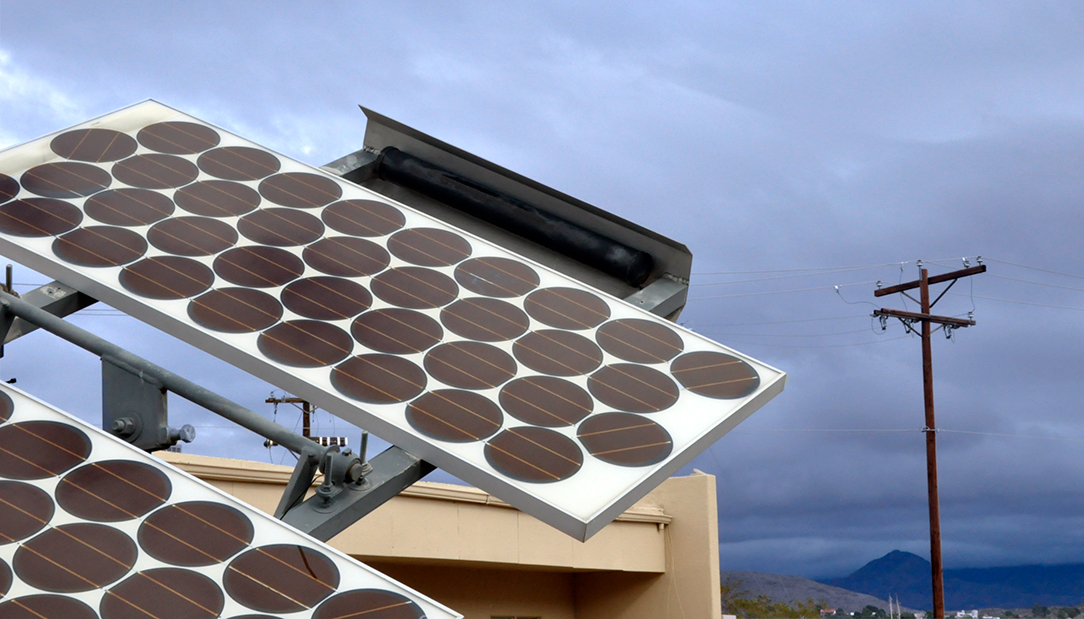NEWS
NM SMART Grid Center Project Highlights from Year 3

Every year the New Mexico SMART Grid Center submits three highlights from the previous project year to the National Science Foundation. This year's highlights recognize "DC Street" at NMSU, seed award results from NMT, and the Explora Science Communication Fellowship program. Below are overviews of what these outstanding project team members are working on - summarized in 250 words or less.
IT'S GOOD TO BE DIRECT
Olga Lavrova, New Mexico State University
What is the outcome or accomplishment?
Researchers from New Mexico State University, in partnership with El Paso Electric and Sandia National Laboratories, are constructing a functioning direct current (DC) microgrid that supports distributed power sources and the bidirectional flow of energy. Coined "DC Street," this test site will allow researchers from institutions of higher education around New Mexico to test their smart grid innovations in a real-life setting.
What is the impact?
This community DC microgrid system will dramatically bolster the state’s contribution to the national body of research on microgrid and smart grid systems.
What explanation/background does the lay reader need to understand the significance of this outcome?
Just as it is more practical to talk to the person standing three feet away than it is to call their cellphone, it is more efficient to use DC in systems like microgrids, where electricity is generated nearby, than it is to use alternating current (AC) which is more efficient over long-distances. As microgrid systems become more popular and economically viable, the demand for safe and reliable DC microgrid infrastructure will increase. However, relatively little research is being conducted on this specific iteration of microgrid infrastructure. The "DC Street" site empowers New Mexico researchers to address this knowledge gap and contribute to the national movement towards a more sustainable, modular, adaptive, resilient, and transactive energy future.
ILLUMINATING THE POWER OF LIGHTNING AND SPRITES TO ADVANCE ENERGY RESILIENCE
Luis Contreras-Vidal & Caitano da Silva, New Mexico Tech
What is the outcome or accomplishment?
PhD student Luis Contreras-Vidal and Assistant Professor Caitano da Silva have documented a direct relationship between the visual structure of sprites, powerful electrical discharges which appear as luminous flashes in the clouds above severe thunderstorms, and the amplitude of their electrical currents.
What is the impact?
Advancing the scientific understanding of lightning physics to devise better infrastructure protection mechanisms benefits national-scale energy distribution systems as well as smaller smart grid systems and contributes to overall grid resilience.
What explanation/background does the lay reader need to understand the significance of this outcome?
Severe weather is responsible for approximately half of the power disruptions in the United States, with thunderstorms accounting for the majority of these outages. The severe thunderstorms in which lightning sprites generally occur are of particular concern given the exceptional amount of energy contained in sprite-producing lightning, which can incapacitate energy distribution structures, communications networks, and navigation systems in a matter of seconds. The research conducted by this team demonstrates—for the first time— that larger, more complex sprites also have larger electrical currents. Their findings increase our understanding of thunderstorms and will undoubtedly inform future efforts to harden our national energy infrastructure against natural disasters.
SAY WHAT? EMPOWERING NEW MEXICO SCIENTISTS TO ENGAGE THE PUBLIC
Allison Brody, Explora Science Center
What is the outcome or accomplishment?
The Science Communication Fellowship program developed by Explora Science Center teaches STEM faculty, students, and scientists research-based communication strategies to effectively engage public audiences, non-scientists, and professional colleagues.
What is the impact?
This Fellowship is increasing the number of New Mexico STEM professionals sharing their work with nonscientists. To date, 27 program graduates have engaged over 3,000 people through public outreach events including the NM Science Fiesta, the STEM Selves video series, Meet a Scientist events and videos, and Teen Science Cafes.
What explanation/background does the lay reader need to understand the significance of this outcome?
STEM programs of study rarely include communication training that prepares scientists to successfully share highly-technical information with laypeople even though effective communication strategies can be a determining factor for a successful career in many STEM fields. Strong communication skills are important for obtaining funding, disseminating one's work, and networking with colleagues and potential collaborators. This Fellowship also equips participants with knowledge and ideas to strengthen the broader impacts of their work. At a societal level, making science more approachable and relevant is critical to cultivating an inclusive STEM workforce and expanding the scientific literacy of all Americans, which in turn fosters an appreciation for discovery, learning, and the scientific enterprise as a whole.


